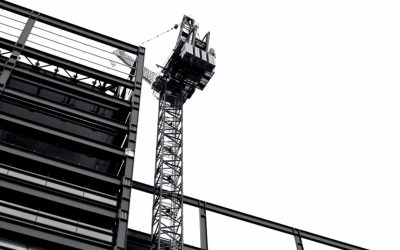
Update & Snapshot: Commercial Tenancy Relief Scheme Regulations 2021 (VIC)
Published: 27 August 2021
Written by: John Momitsas and Sarah Ibrahim
A very much anticipated wait (since our Article earlier this month) has finally come to an end following the announcement of the new regulations that are set in place under the Tenancy Relief Scheme Regulations 2021 (VIC) (the Regulations).
The new measures which were announced on August 24th are closely mirrored to the regulations that were in effect until March 2021, under the COVID-19 Omnibus (Emergency Measures) (Commercial Leases and Licences) Regulations 2020 (VIC). However, the Regulations include important and additional updates which include eligibility tests and mandatory reassessment testing. The Regulations have a retrospective effect from 28 July 2021, will be in force until 15th January 2022.
To find out if these apply to you, here is an overview of what you need to know.
Who is eligible?
Pursuant to the Regulations, an eligible lease is one which:
- Is in effect on 28th July 2021;
- the Tenant is an eligible Tenant; and
- if a new lease is entered into after the 28th of July 2021, it is deemed to be a continuation of an eligible lease in effect as of 28th July 2021.
What about Tenants? An eligible tenant is:
- an entity carrying out business in Australia, or a non-profit body which pursues its objectives principally in Australia;
- a SME business, or a non-for profit with annual turnover less than $50 million for the whole of the financial year ending 20 June 2021; and
- a tenant which has met the decline in turnover test (at least 30% decline, or 15% for non-profit).
Obligations for Landlords and Tenants
As a general principle of the Regulations, it is expected that all discussions and actions between a Landlord and Tenant associated with the Regulations are negotiated on a bona fide and reasonable basis.
Rent relief:
A Tenant under an eligible lease is not in breach of a failure to make rent repayments within the protected period if:
- before a rent agreement is made, the Tenant has made a claim to the Landlord, while accordingly paying the calculated deducted rent payment under the eligible lease:
- the rent relief request must be in writing and accompanied with an eligible lease and evidence of satisfying the decline in turnover test. If this is not satisfied, the request will lapse. A rent relief request made before September 30th will commence on 28th July. Any date after the September 30th will commence on that day.
- the Tenant is ensuring they are paying the prescribed relied payments; and
- if after an agreement was made a Tenant’s financial position has materially changed, they are eligible to apply for subsequent rent relief.
Duty of a Landlord:
Upon receiving the rent relief request from the Tenant, a Landlord has 14 days to offer rent relief. After this period the Landlord must, for example:
- provide rent relief which is at the minimum requirement under the decline in Tenant’s turnover;
- provide at least 50% rent relief by way of waiver.
After 15 days of the Tenant receiving an offer of rent relief by the Landlord, the request is regarded to be agreed and accepted if no information has been advised otherwise.
What are some other key changes?
Mandatory testing – If a rent relief agreement has already been made, the tenant’s rent relief request was on or before 30 September 2021, and the tenant began trading before April 2021, the Tenant is required to give the Landlord the following information:
- the Tenant’s turnover for the turnover test period;
- the Tenant’s comparison turnover (the tenant can choose between three months from April – September);
- the calculation of the Tenant’s change in turnover; and
- a statutory declaration that declares that the Tenant is an eligible tenant and the information provided by the Tenant is in fact true.
Trading hours- Similarly to the 2020 regulations, as Tenant will not be held to be in breach of its lease if the Tenant reduces its opening hours or ceases to operate within the protection period.
Deferred rent – upon agreement of rent deferral, under the lease the Landlord must offer to the Tenant an extension of the lease term, which is equal to the period for which rent is deferred.
Moving Forward
The Regulations are very much what we expected to see. As a Landlord or Tenant, it is important to familiarise yourself with the Regulations for possible eligibility, and to understand your rights and obligations you may have. If you require assistance, please contact our Real Estate team.
Other Articles of Interest
Feel free to browse our other news items. Of course, if you’d like us to expand upon any points raised, please reach out to us.
In the case of Lonergan v JQZ Eleven Pty Ltd [2022] NSWSC 14 the NSW Supreme Court determined whether an off-the-plan seller engaged in...
Background A rare decision regarding compensation for non-pecuniary loss has been recently handed down from the High Court of Australia. The case considers whether recovering compensation for distress and disappointment is limited to damages caused...
Transformer Development Group Pty Ltd v Tait Street Investments Pty Ltd [2023] VCC 878. In Victoria, the recent case of Transformer Development Group Pty Ltd v Tait Street Investments Pty Ltd [2023] VCC 878 confirms that pre-conditions to...
A legislative comparison of electronic signing regimes in Australia Background In 2020, temporary changes to the Corporations Act 2001 (Cth) (the Act) were made as a COVID safety measure, which allowed for the electronic execution of...
An obligation to “carry on the business” – High Court defines the principles in Laundy’s CaseA decision regarding the sale and purchase of a hotel in Pyrmont that has impacts on many current transactions has recently been handed down from the High...
Legislative Wrap-Up 2022: Grant of option now dutiableOn 19 May 2022, the Duties Act 1997 (NSW) was amended by the State Revenue and Fines Legislation Amendments (Miscellaneous) Act 2022 (NSW) (the Act). Upon its royal assent, a new head of duty...
Legislative Wrap-Up 2022: Corporations Act gets a new virtual lookIn late February, the Corporations Amendment (Meetings and Documents) Act 2022 (Cth) (Meetings and Documents Act) came into effect, amending the Corporations Act 2001 (Cth)...
Legislative Update 2022: Introducing more competition into the conveyancing spaceThe Electronic Conveyancing (Adoption of National Law) Amendment Act 2022 (NSW) (the Act) has mandated interoperability between e-conveyancing services in NSW which...
Legislative Wrap-Up 2022: Bars, gyms and exercise studios get added protection as tenantsBrief amendments to the Retail Leases Act 1994 (NSW) (the Act) came into effect on 1 January 2023, expanding the current list of businesses covered by Schedule...
Legislative Wrap-Up 2022: Strata schemes required to disclose moreOn 30 June 2022, new regulations under the Strata Schemes Management Act 2015 (NSW) were written in through the Strata Schemes Management Amendment (Information) Regulation...
Back to News + Articles










